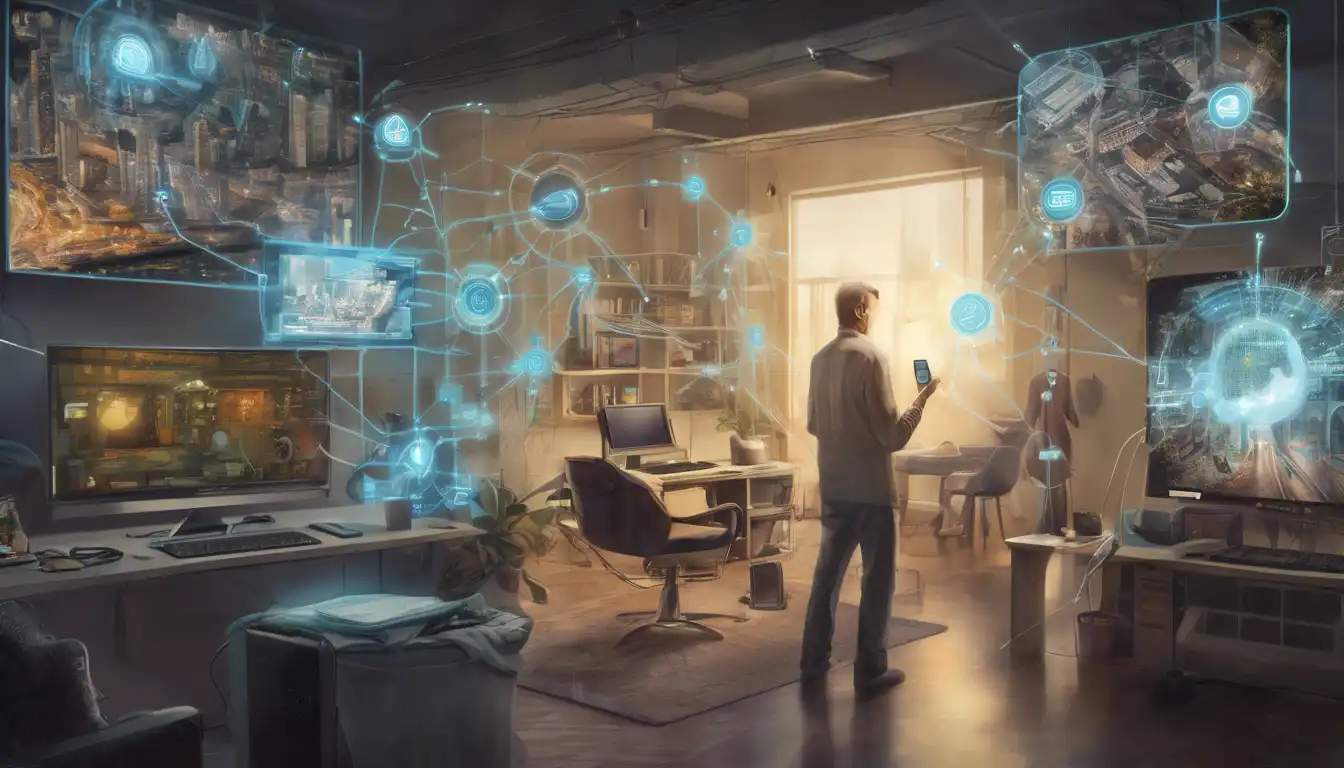Introduction to the Internet of Things (IoT)
The Internet of Things (IoT) represents a revolutionary shift in how we interact with technology, embedding intelligence into everyday objects. This network of connected devices is not just changing the way we live but also enhancing our quality of life in unprecedented ways.
How IoT is Making a Difference
From smart homes that adjust temperature and lighting based on your preferences to wearable devices that monitor health metrics, IoT is at the forefront of personal convenience and health management. The ability to control and monitor devices remotely has introduced a new level of efficiency and safety in our daily routines.
Smart Homes for Enhanced Living
Imagine waking up to a house that has already adjusted the thermostat to your preferred temperature, brewed your coffee, and opened the blinds to let in the morning light. This is not a scene from a futuristic movie but a reality made possible by IoT. Smart homes learn from your habits and adjust settings to optimize comfort and energy use.
Wearable Technology for Health Monitoring
Wearable devices have transformed health monitoring, providing real-time data on heart rate, sleep patterns, and physical activity. This constant stream of information empowers individuals to make informed decisions about their health and lifestyle.
The Role of IoT in Public Safety and Infrastructure
Beyond personal convenience, IoT plays a critical role in enhancing public safety and infrastructure. Smart cities utilize IoT to manage traffic flow, reduce energy consumption, and improve emergency response times. Sensors and connected devices provide city planners with valuable data to make informed decisions that benefit the community.
Smart Traffic Management
Traffic congestion is a significant issue in urban areas, but IoT offers solutions through smart traffic management systems. These systems analyze traffic patterns in real-time, adjusting signal timings to reduce congestion and improve commute times.
Energy Efficiency and Sustainability
IoT technologies are instrumental in promoting energy efficiency and sustainability. Smart grids optimize electricity distribution, reducing waste and lowering costs for consumers. Similarly, IoT-enabled water management systems detect leaks and monitor usage, conserving precious resources.
Challenges and Future Directions
Despite its benefits, IoT faces challenges, including privacy concerns and the need for robust cybersecurity measures. As the network of connected devices grows, so does the potential for security vulnerabilities. Addressing these issues is crucial for the continued adoption and trust in IoT technologies.
Looking ahead, the potential of IoT is boundless. Innovations in AI and machine learning will further enhance the capabilities of IoT devices, making them even more intuitive and responsive to our needs. The future of IoT is not just about connecting devices but creating a seamlessly integrated ecosystem that improves every aspect of our lives.
For more insights into how technology is shaping our future, explore our technology trends section.
